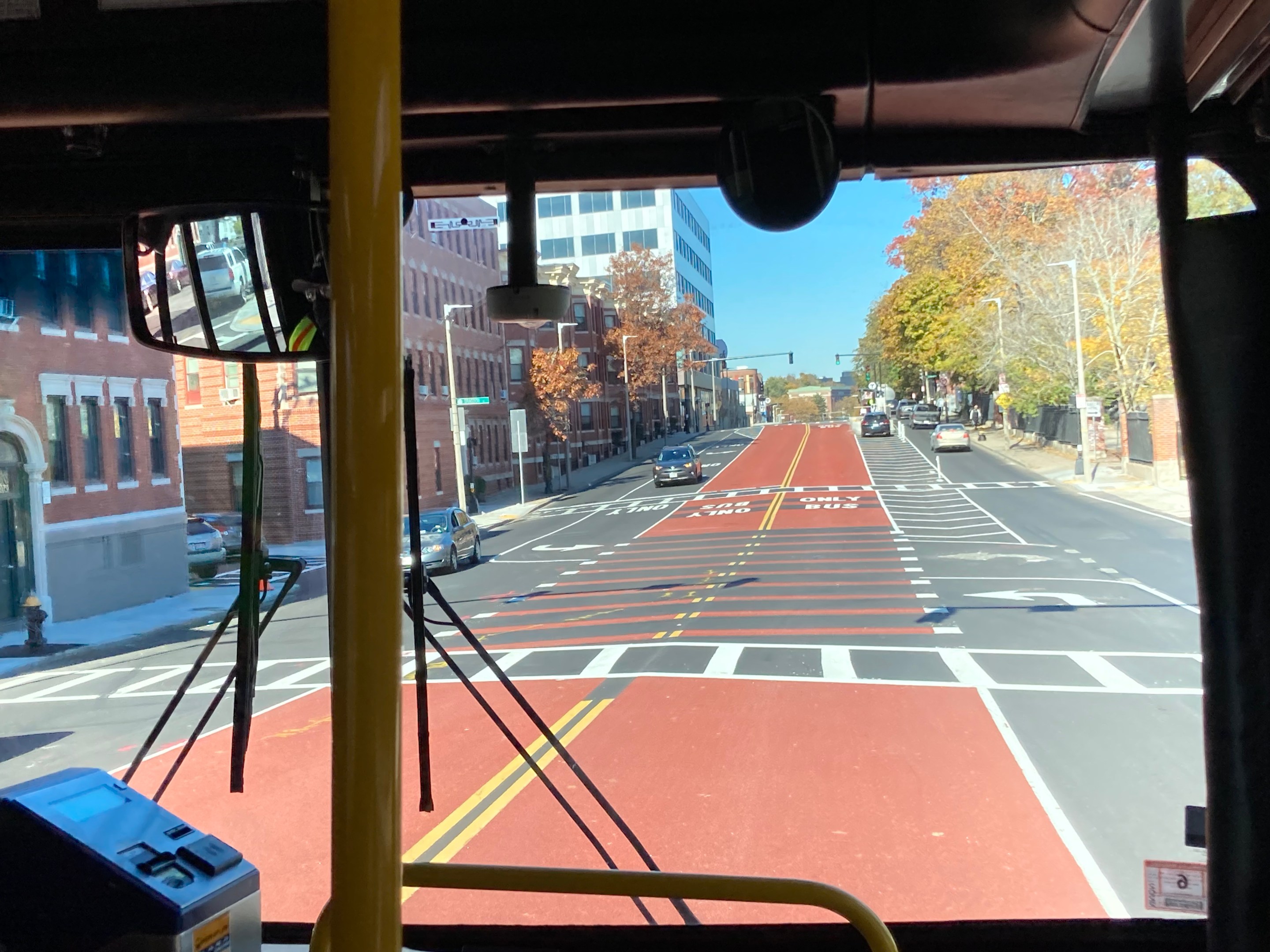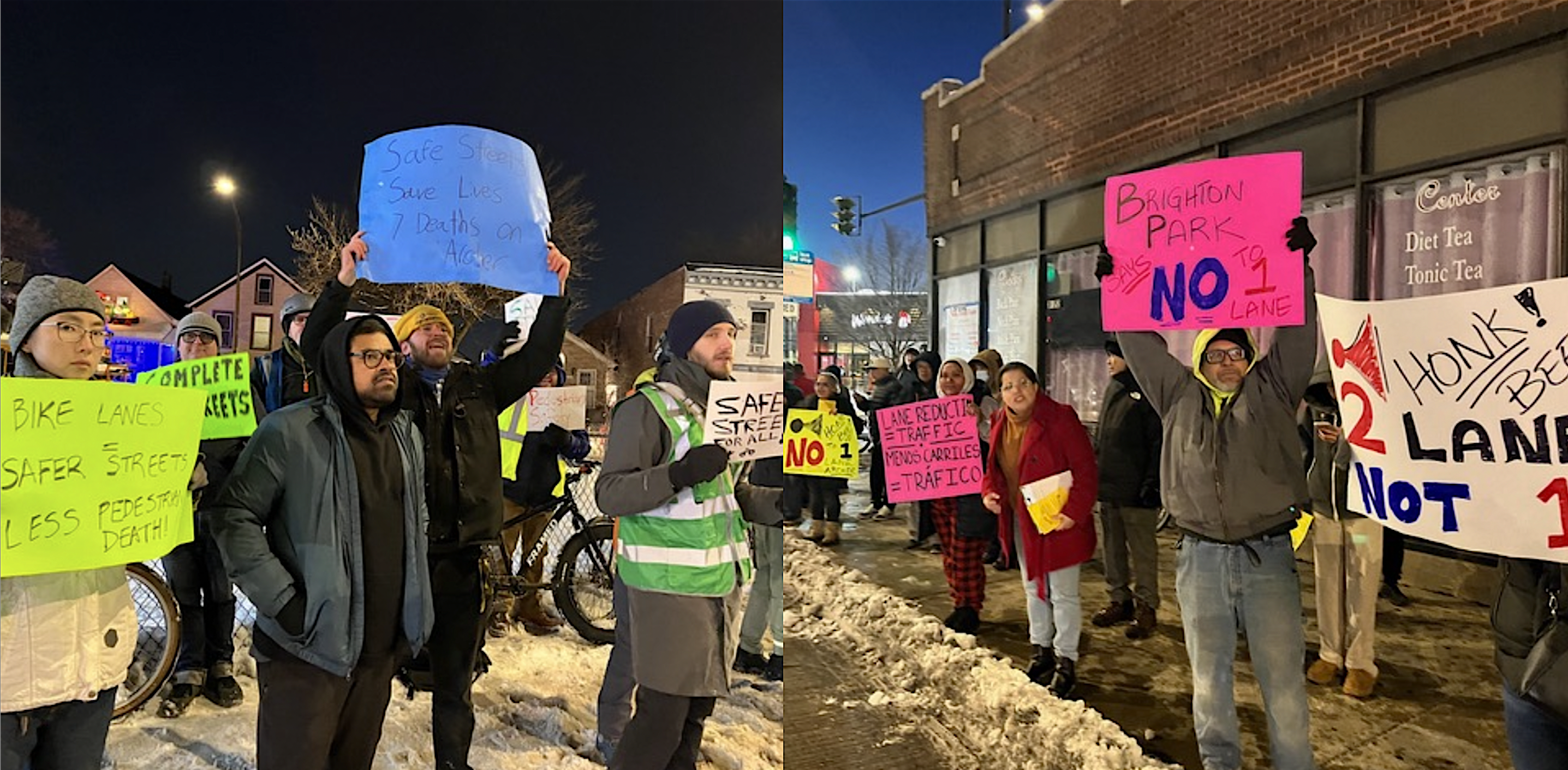Years ago when I first moved to Chicago and took the CTA's #4 Cottage Grove bus downtown from my then-neighborhood of Kenwood to visit the Art Institute museum, I was struck by the inefficiency of buses getting stuck in driver-generated traffic congestion on Michigan Avenue. I knew there had to be a way to move buses more quickly through the city.
Eight years later and there is a sliver of hope that Michigan Avenue and many other streets in Chicago will become bus-priority corridors. The Chicago Transit Authority and the Chicago Department of Transportation announced in late April that they’re seeking public input on the Better Streets for Buses plan, an effort to improve bus service on key routes across the city. The initiative includes a proposed network of streets where improvements will be focused. Residents will choose among options for bus improvements such as enhanced bus stops, traffic signals that give buses priority, and bus-only lanes.
As much as I’d love for every CTA bus to receive priority on our streets, the CTA and CDOT acknowledge in the Better Streets for Buses Plan that improvements will not happen on every corridor in the network. At a recent BSBF meeting hosted by the Hyde Park-Kenwood Community Conference, CTA Planner Jennifer Henry said the plan won't prescribe exactly which interventions the bus-priority corridors will get. Rather, she said, the specifics of which streets will get bus lanes, new shelters, and other amenities will be ironed out later.

Several attendees at Tuesday’s meeting shared frustrations with the #6 Jackson Park Express route, Block Club reported. The most common complaint was buses appearing on the Bus Tracker but never showing up, along with long wait times and delays. South lakefront transit users have suggested:
- A bus-only lane and increased bus service along Stony Island Avenue near the future Obama Presidential Center
- Adding 71st St. to the proposed network
- The creation of an express bus route along Cottage Grove Avenue
- Bus rapid transit or bus-only lanes along Garfield Boulevard / 55th Street
Many folks who have attended the BSFB public meetings noted that CTA and CDOT officials stressed the need for attendees to reach out to their alderperson and voice their support for the plan to be funded and implemented. Curiously though, this message is absent from the BSFB website, where Chicagoans have been invited to weigh in on the plan.
Earlier this week, the Environmental Law & Policy Center launched an email campaign to urge the CTA and CDOT to create five bus rapid transit lines in five years. ELPC points to a report produced by the Metropolitan Planning Council on BRT in Chicago. The report assesses 10 routes that could be viable BRT routes in Chicago including Western Avenue, Ashland Avenue, King Drive/Cottage Grove Avenue, and Stony Island, and 95th Street.
While ELPC has the best intentions with the email campaign, I’m wondering if it would be more effective to send emails to Chicago alderpersons who determine how much CDOT can actually accomplish and where they can actually make changes. While the system of improving transit and adding bike infrastructure on a ward by ward basis is nonsensical and ineffective, it’s the system we have and it would make some sense to engage those who control the process. If you’ve already engaged with the Better Streets for Buses Plan, why not add an extra step and shoot your alder an email letting them know you support efforts to speed up bus service and improve bus reliability in Chicago?






